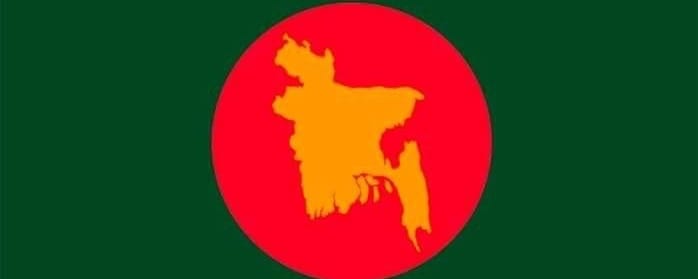Demystifying Some Myths regarding the July-August Protest and Addressing Some Questions

Q1. Was the death toll of July-August protests 1,500?
Q2. Did security forces use unnecessary force?
Q3. Was Sheikh Hasina responsible?
About the Death-Toll
That 1,500 people were killed during the July-August protests is not a settled and/or accepted figure. While advisors of the interim government, their political functionaries, and their supporters and apologists have been throwing away terms like "thousands," “around 1,500," "thousands," and “more than 2,000," the government’s own authoritative source, the Ministry of Health, tasked specifically to list the people killed and injured, has published a list of 854 fatalities (1a) & (1b). While even hundreds killed is not an insignificant figure, publicizing the exact number should not have been a contentious matter. The use of arbitrary figures only goes to show how the interim government, their functionaries, apologists, and supporters have completely politicized the discussions in this regard.
(1b)https://www.thedailystar.net/news/bangladesh/news/govt-updates-uprising-death-toll-its-858-3781386
Did Security Forces Use Unnecessary Force?
In specific instances, there was undoubtedly prima facie evidence of unnecessary and/or disproportionate use of force from some law enforcement agents (LEAs). Where such prima facie evidence was collected and verified by the Awami League Government, actions were being taken. For instance, the two police officials who shot Abu Syed, the first student killed, were suspended by the previous government (2).
As to whether there was widespread and/or systemic use of unnecessary and/or disproportionate force, the previous government was sincere to find that out objectively. The fact that the Awami League Government first constituted a judicial inquiry on 18 July 2024 (3) and then extended its duties on 1 August 2024 (4) stands testament to that fact. The Awami League government even declared to take foreign technical assistance, including from the United Nations (6), in order to ensure the credibility of the inquiry (5). However, those investigations were scrapped by the Dr. Yunus-led interim government.
Alarmingly, no such comprehensive investigations have been initiated by the interim government itself, which looks into the violent events of July and August as a whole. Rather, the investigations have been left to the whims of the local police in hundreds of separate cases. There are now credible media reports as to how these cases have become a tool for implicating the Awami League-aligned people, evidentiary basis notwithstanding, and for shaking down the innocent in extortion rackets (7). The situation is so bad that even the Dhaka Metropolitan Police Commissioner himself admitted as much (8). Thus, there is very little to be expected from these cases in revealing the truth about the July-August events.
(7) https://www.thedailystar.net/opinion/editorial/news/extortion-using-dubious-cases-must-stop-3772121
(8) https://www.thedailystar.net/opinion/editorial/news/extortion-using-dubious-cases-must-stop-3772121
Was Sheikh Hasina Responsible?
As to whether the LEAs used unnecessary force, and if so, whether Sheikh Hasina was responsible, are questions that could be properly answered only following credible, impartial investigations into all the relevant developments in the July-August events. Not only has the interim government not taken any such initiative, it has in fact legally closed the gates to even exploring the questions (9). This is because the interim government has announced de facto immunity for all protesters for all acts committed in furtherance of the July-August “uprising” until August 8.
This is significant because it restricts the already nonexistent investigations from even venturing into territories, which could put any blame on forces except the previous government or the Awami League. It should be noted that even pre-August-5, during the protests, there were widespread attacks on state and government properties, including key point installations (10), attacks on police (11), attacks on Awami League offices, etc., which, at the very least, contributed heavily to the already volatile environment.
This has also shielded criminals who engaged in widespread violence from August 5 onwards, including attacking at least 400 police stations (12), killing at least 44 LEAs (13), killing Awami League activists (14), attacking religious minorities (15), etc. The immunity provided is also indicative of the lack of transparency with which the interim government is operating as regards unearthing the truth about the events of July-August.
(15) https://www.dhakatribune.com/bangladesh/359102/2-010-communal-violence-reported-from-august-4-to
Such opaqueness raises suspicions; suspicions which are further bolstered by statements from key students leaders like Nahid Islam (Coordinator of the Students Against Discrimination Movement and Advisor to the Interim Government) that they had given instructions for “armed struggle” (16); Hasib Al islam (Coordinator of the SAD Movement) that without killing police officers and setting key point installations (KPIs) on fire, their movement would not have achieved the aims of unseating the Awami League Government and forming a revolutionary government (17); Abdul Hannan Masud (Chief Coordinator of the SAD Movement) admitting on live TV that their objective was not quota reforms but the “downfall of Sheikh Hasina’s Government” (18); and Sarjis Alam (Coordinator of SAD Movement) that no bodies (corpses) of people killed in July-August violence will be “allowed to be exhumed for autopsies” (19).
There is also the very indicative comment of Dr. Md. Yunus from September 2024 in New York when he said that the protests and the unseating of the Awami League Government on August 5 were “not accidental” but “meticulously designed” (20).
These are important issues that need deeper inquiries because the question as to whether the police used unnecessary force would depend a lot on what the police was using that force against—a peaceful student protest demanding rights or entitlement or a violent insurrection against an elected, constitutional government. However, given the lack of investigations, immunity for protesters, and scrapping of the judicial inquiry, those questions remain, at best, speculatively answered. Thus, as things stand, the interim government itself has made impossible the task of answering those questions definitively.
Reply